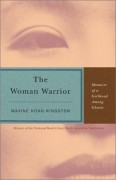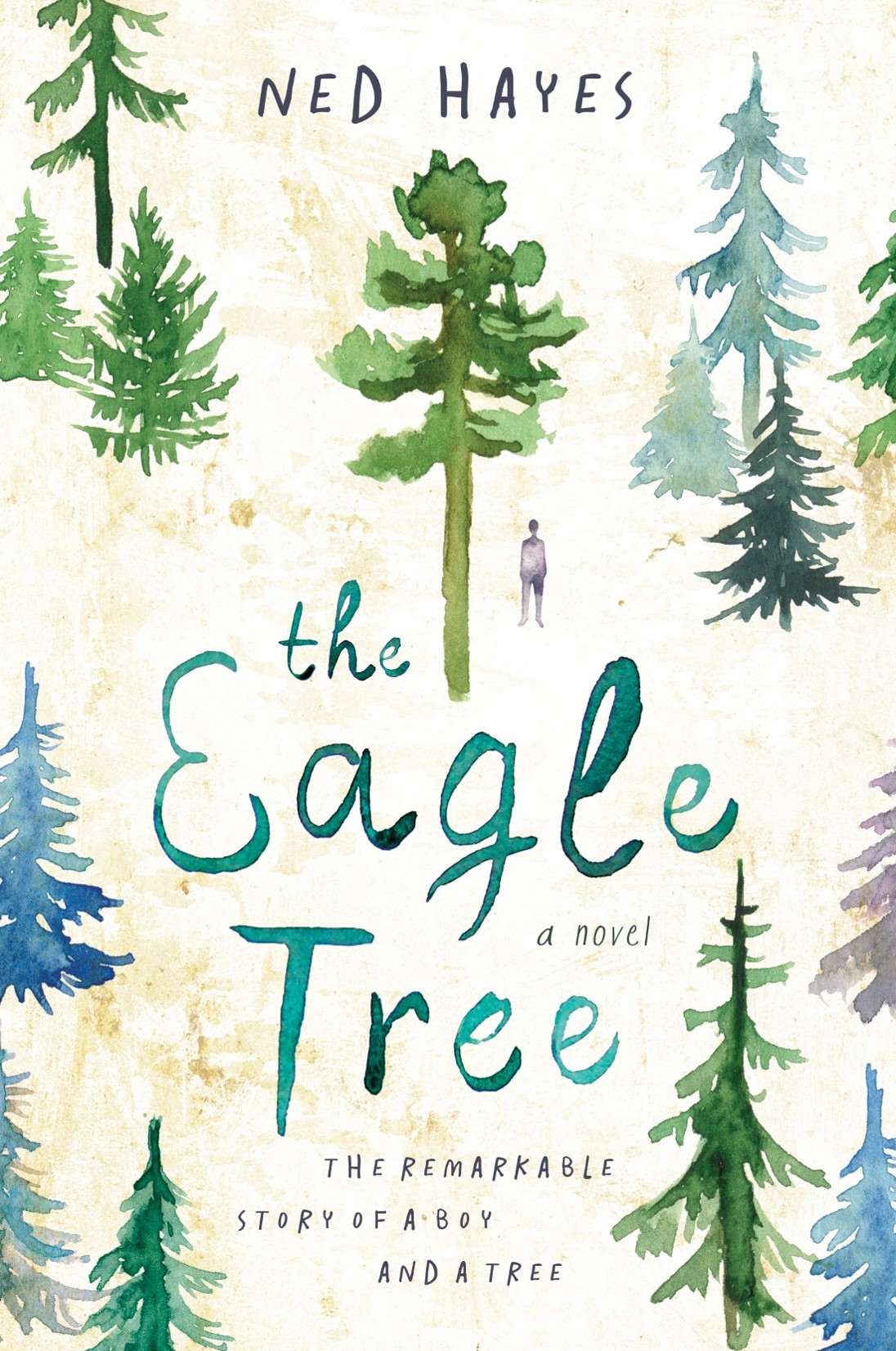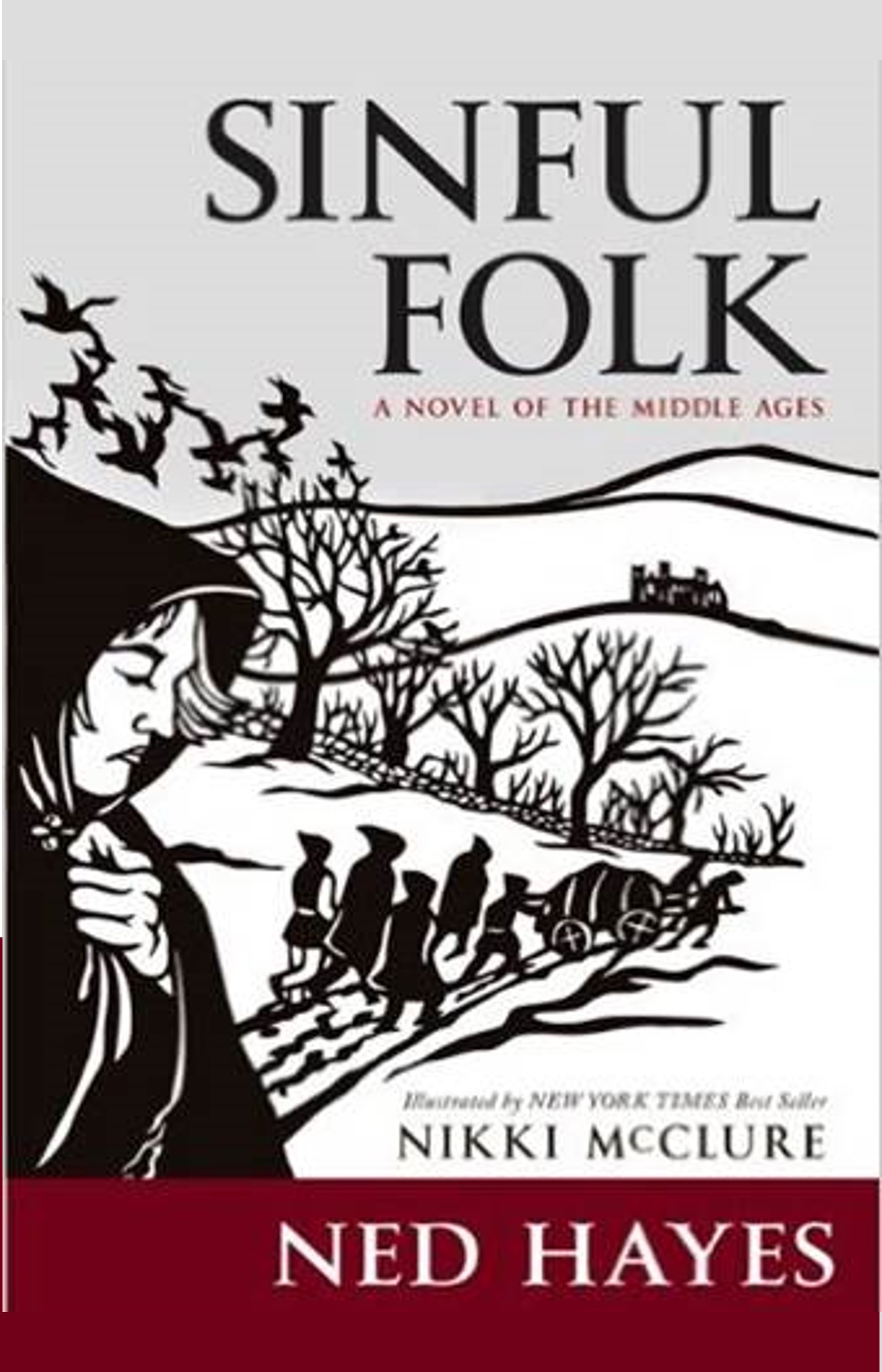reposted from BookLikes

We’re happy to introduce the next guest in BookLikes’ Author Talks. Ned Hayes, author of the historical novels Sinful Folk and Coeur d’Alene Waters agreed to talk to us about his recently published novel, his childhood in China, writing plans, reading habits and favorite reading spot. He even speaks in Mandarin for us!
![]() How did it all start? What inspired you to start writing?
How did it all start? What inspired you to start writing?
I have wanted to be a writer since I was in grade school, and I wrote my first book in 7th grade (it wasn’t very good, and probably was derived too much from Watership Down and Madeline L’Engle). In college I also wrote several books, but didn’t publish them.
In the subsequent years, I published many short pieces in national magazines and literary journals, and I worked as an Associate Editor for the national literary journal Bellingham Review. My first published novel was COEUR D’ALENE WATERS, and was based on the area in the Pacific Northwest where I went to undergraduate college.
In the 1990s, I studied medieval literature under noted scholar Richard Emmerson. And as I read Chaucer, I came across a bit of history from the 14th century. Children died in a tragic house fire in a distant village. The families were in such agony that they took their dead children across England to the King’s throne to demand justice. The same night I read of this incident, I couldn’t sleep – I stayed up and wrote a rapid beginning to the story.
But then I put the story on a shelf for nearly ten years. Then, one day, as I was watching my children playing, I thought of the agony of child-loss, and the pain I would feel if one of my children was lost. I wondered how far a mother would go to protect her child’s memory?
So in 2007, I suddenly started writing the book again and my writing rapidly focused on one woman’s story. One mother loving her child. One tragedy. One relentless urge to find answers. I began to think deeply about children, mothers, families, and loyalty.
I picked my old pages back up and suddenly I was haunted by the character of Miriam/Mear – I almost felt that she was a ghost who wanted her story to be told, and I was impelled to tell the truth of her life.
By the time I finished the first draft, I was overwhelmed by the tenacity and perseverance of Mear – her life showed me what strength is hidden in the most unlikely heroines. She showed me how strong a woman can be. What power can be concealed in silence. Mear showed me the power of a mother’s love.
![]() You were born and raised in China. How did your childhood affect your adult life and choice of becoming a writer?
You were born and raised in China. How did your childhood affect your adult life and choice of becoming a writer?
I think that my childhood in China has been useful to me because it allows me to see through new and different eyes. A writer should always be an “outsider,” seeing things “afresh,” and I am grateful for that early experience, because I often see things through a different set of cultural, anthropological and writerly lens.
I also have a deep appreciation for the strangeness and interesting qualities of English as a language amalgamated from a variety of source languages. Chinese is a fascinating language as well, but it is more internally consistent than English, which is often kind of a mad cousin of a language, borrowing from everywhere and spreading its influence in every culture around the world. I love writing in English, but partially because it is such a malleable interesting instrument.
![]() A characteristic feature of your books is their genre: historical fiction. Is history your favorite subject for your novels? Why?
A characteristic feature of your books is their genre: historical fiction. Is history your favorite subject for your novels? Why?
All fiction is historical fiction in some manner, as you have to establish the history, back-story and grounded realities of your character’s situation. When you’re writing a fantasy novel, the challenge is actually harder, because you need to invent the complete world, and ensure it is a real-feeling construct and internally consistent.
I love historical fiction set in the real world, because I get to learn new and exciting bits of history. It was very interesting to me to learn a lot about the medieval era in writing this novel.
Here are a few small examples — in the 14th century, the game Chess didn’t exist as we know it today! And the idea of a toilet — even an outhouse — was a relatively new invention for English peasants. And finally, many women masqueraded as men for much of their lives. There was even a pope who was a disguised woman — Pope Joan — and this fact about womens’ history gave me much inspiration for my novel.
But I wrote SINFUL FOLK not because of the history per se, but because I could deeply imagine the experience of these parents losing their children. I could imagine their pain. The torture of losing your child. Their angry search for answers.
It is the first time I felt the truth of Alice Walker’s idea that she is writing down the story of “ghosts” — of real people who want their stories told in the present. I felt like I was hearing her in my own head: reading her own personal journal.
I heard Mear’s voice so clearly and her story was so real to me, I needed to tell it.
SINFUL FOLK ultimately became her story — a story of loss and tragedy that becomes Mear’s very personal narrative of redemption and personal triumph.
![]() You know English and Mandarin. Do you write/publish in the latter?
You know English and Mandarin. Do you write/publish in the latter?
I am only published right now in English, although I have submitted poems in Mandarin Chinese to Chinese literary journals.
![]() Your book “Sinful Folk” received beautiful illustrations by Nikki McClure. How did the idea of combining writing and graphics occur?
Your book “Sinful Folk” received beautiful illustrations by Nikki McClure. How did the idea of combining writing and graphics occur?
New York Times best-selling illustrator and author Nikki McClure and I know each other through our children’s school and our mutual interest in locally sourced art and supporting local artists. Nikki’s son and my children both attended the Lincoln Options Elementary School, and we are both very involved in the local arts community in the South Sound area in the Pacific Northwest. We first met at a Solstice Celebration that featured local children in an impromptu theatrical celebration of the season.
Nikki created the cover of Sinful Folk as one of her signature papercut pieces, but went in a new direction for the internal illustrations, which were created with charcoal pencils. After reading the book in 2012, Nikki created her own graphical interpretation of SINFUL FOLK, which was accepted as the cover in late 2012.
I love the way that Nikki used papercuts and charcoal as the medium for illustration, as both are art forms that were used in the Middle Ages, and both styles of art were well known in the medieval era.
How do you say “I love books” in Mandarin?
Wǒ ài shū !
What are you reading right now?
I had long delayed reading Ariana Franklin’s marvelous medieval mystery MISTRESS OF THE ART OF DEATH. My wife read Franklin’s book while I was writing SINFUL FOLK, and recommended it to me, but I deferred the book because I was afraid of similarities while I was writing a book that was also a medieval mystery with a strong female lead: I am glad I delayed, but I’m also glad to be reading the book now.
I also have been reading Adam Neville’s great horror novels, starting with his lost-in-the-woods book of terror and the supernatural, THE RITUAL. Neville is such a talented writer, and I really enjoy his ability to build suspense and terror. I am loving Frank Zafiro’s crime and cops novel AT THEIR OWN GAME.
Finally, I’ve been re-reading Tim Power’s novel DECLARE, as well as Maxine Hong Kingston’s great memoir THE WOMAN WARRIOR. I recommend all these books to you!
What’s your favorite quote?
The first duty of the novelist is to entertain. It is a moral duty. People who read your books are sick, sad, traveling, in the hospital waiting room while someone is dying. Books are written by the alone for the alone.
This wonderful quote from novelist Donna Tartt’s reminds me that our first job as writers is to tell a story, a story that entertains.
Paper books or e-books? Why?
I have two Kindles that are both fairly packed with e-books, and I love the portability of the Kindle experience: I can take a full stocked library almost anywhere! I’m reading 2-3 books on my Kindle right now. (I also love Amazon’s ability to sync between an Audiobook and an e-book – that just makes the whole reading experience richer and easier!)
But I also love reading on paper, and I have a stack of books beside my bed to read, as well as 2-3 books that I’m reading on paper right now as well.
May both Print and E-books thrive forever!
In the second part of the interview Ned Hayes will tell us more about his writing process and what he’s working on right now. He will also reveal his truly magical reading spot and share advice for aspiring writers. Stay tuned!
A literary update from NedNote.com
Readers can find my books at these bookstores:











